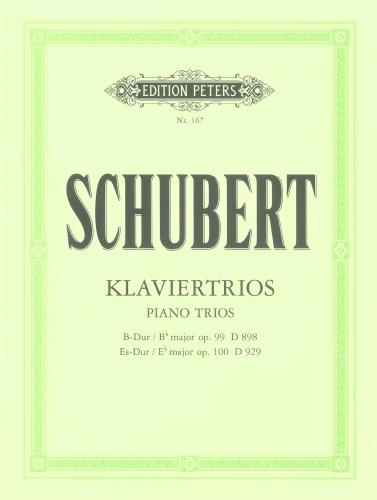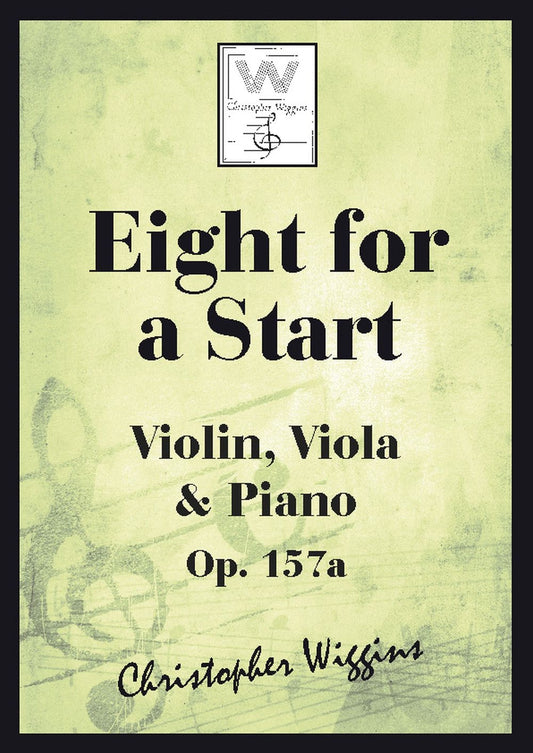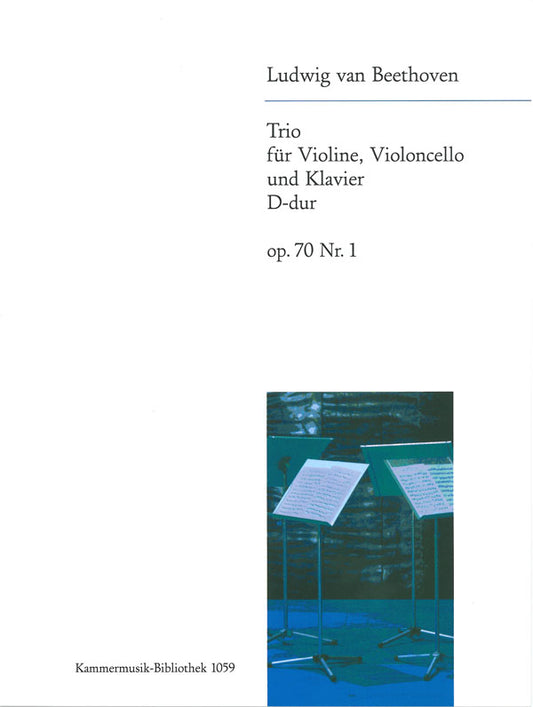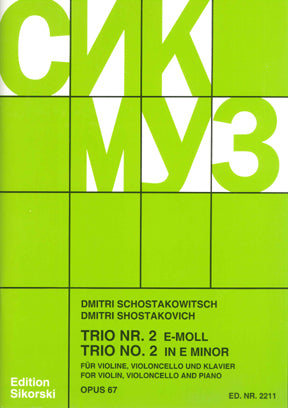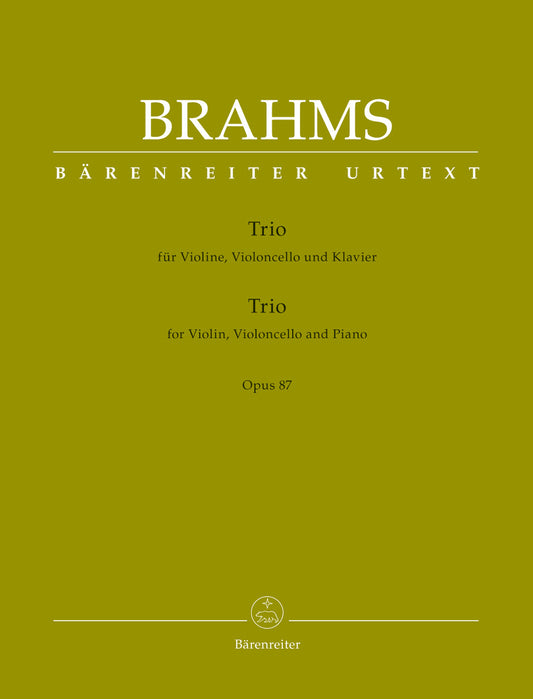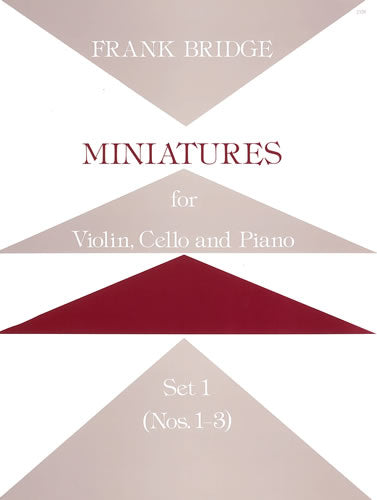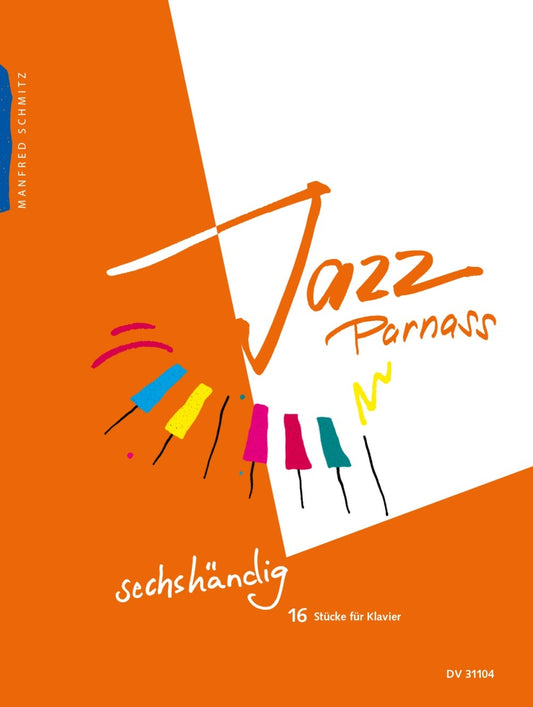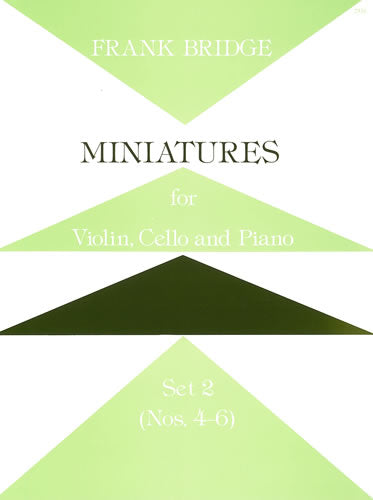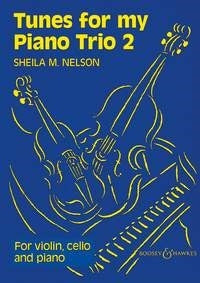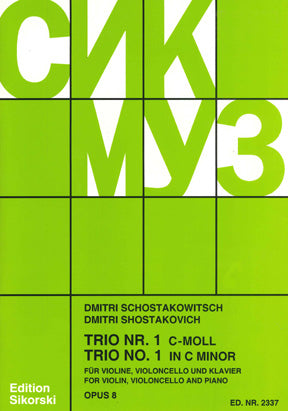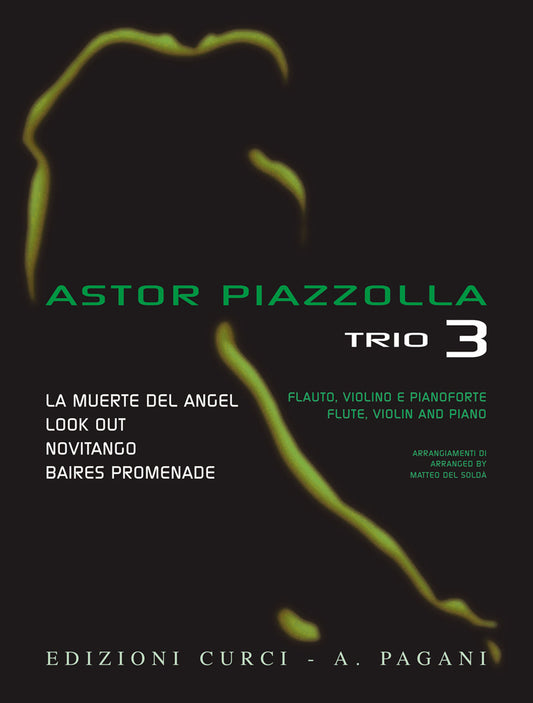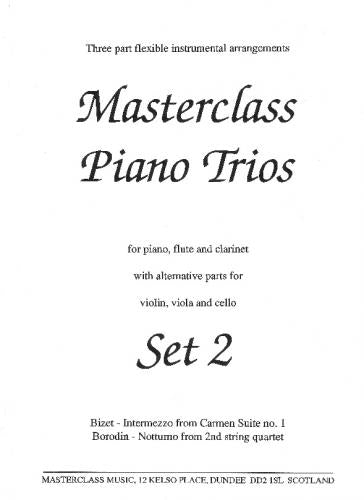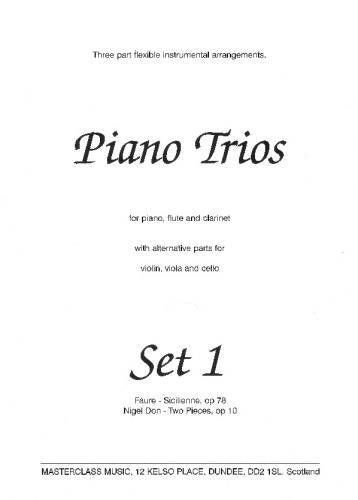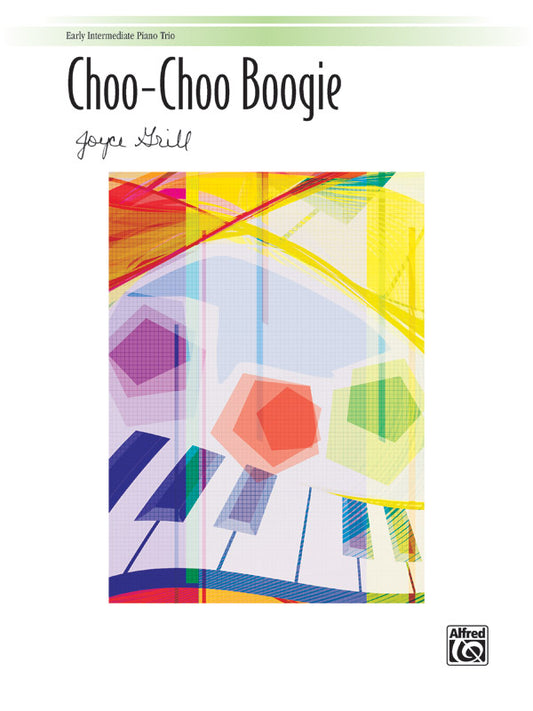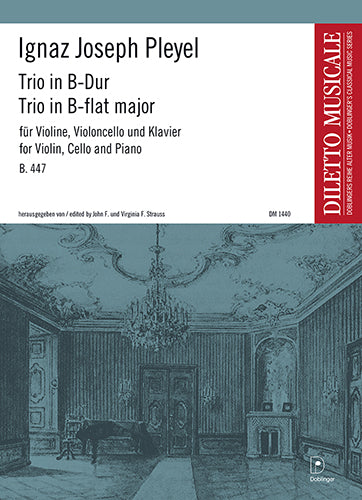-
Schubert Piano Trios Bb/Eb maj Op.99/10
Regular price £36.95Regular priceUnit price / per -
Classical Vienna Pno Trio Litten ALF
Regular price £14.95Regular priceUnit price / per -
Baroque London (piano trio)
Regular price £14.95Regular priceUnit price / per -
Carse Miniature Trios 2 Rondino Pno trio
Regular price £6.80Regular priceUnit price / per -
Eight for a Start Vln Vla & Pno Wiggins
Regular price £14.25Regular priceUnit price / per -
Beethoven Pno Trio Op70/1 KM EB
Regular price £19.75Regular priceUnit price / per -
Schostakovich Pno Trio 2 E min Op67 SIK
Regular price £56.99Regular priceUnit price / per -
Brahms Pno Trio Op87 Pts BA
Regular price £19.00Regular priceUnit price / per -
Bridge Miniatures Set1 Vln Vc Pno
Regular price £9.95Regular priceUnit price / per -
Schmitz Jazz Parnass Pno Six-Hands BH
Regular price £15.50Regular priceUnit price / per -
Debussy Golliwoggs Cakewalk Pno Trio s
Regular price £14.99Regular priceUnit price / per -
Bridge Miniatures Set 2 Vln Cell Pno
Regular price £9.50Regular priceUnit price / per -
Tunes for my Piano Trio 2 BHP Nelson
Regular price £20.99Regular priceUnit price / per -
Eight for a Start Flt Clt & Pno Wiggins
Regular price £14.25Regular priceUnit price / per -
Shostakovitch Pno Trio No.1 C minor Op.
Regular price £22.99Regular priceUnit price / per -
Piazzolla Trio 3 Flt VLn&Pno ECAP
Regular price £17.95Regular priceUnit price / per -
Masterclass Pno Trios Set2 Flex arr
Regular price £16.99Regular priceUnit price / per -
Masterclass Pno Trios Set1 Flex arr
Regular price £16.99Regular priceUnit price / per -
Choo Choo Boogie Grill Pno Trio ALF
Regular price £4.95Regular priceUnit price / per -
Pleyel Pno Trio in Bb B. 447 DM
Regular price £20.95Regular priceUnit price / per
Collection:
Description of Piano Trio Sheet Music:
A piano trio is a chamber music ensemble consisting of three instruments: piano, violin, and cello. The sheet music for a piano trio is written to accommodate the unique characteristics of each instrument, combining the harmonic support of the piano with the melodic lines of the violin and cello. The music typically features all three instruments interacting in a balanced way, with each player having distinct roles: the piano provides harmonic structure and rhythm, while the violin and cello contribute melodies, counterpoint, and emotional depth.
Piano trio sheet music is written on three staves:
- Piano – This part usually consists of two staves (treble and bass) to accommodate both the upper and lower registers.
- Violin – The violin part is typically written on a single treble clef staff.
- Cello – The cello part is written in bass clef, though it may occasionally switch to tenor clef for higher passages.
The interaction between the three instruments is what makes the piano trio such a rich and dynamic ensemble. The ensemble can play together harmonically in unison or break into contrapuntal textures, where each instrument has an independent voice. Piano trio music often involves complex interplay between the instruments, blending virtuosic solos, intricate dialogues, and lush harmonies.
History of Piano Trio Sheet Music:
Early Roots (17th and 18th Centuries):
- The origins of the piano trio can be traced to the 17th and 18th centuries, when the Baroque period saw the rise of small chamber ensembles. However, the modern piano trio as we know it today did not emerge until the Classical period.
- In the early Baroque period, composers like Johann Sebastian Bach wrote chamber music with keyboard instruments and strings, such as his "Brandenburg Concerto No. 5," which features a harpsichord, violin, and cello. However, this was not yet a formal piano trio.
- During the Classical era, as the piano began to replace the harpsichord as the standard keyboard instrument, the idea of the piano trio took shape. The format became a popular genre of chamber music, especially in the courtly and bourgeois settings that prized small, intimate ensembles.
Classical Period (1730–1820):
-
The piano trio genre truly took off in the Classical period, with composers like Joseph Haydn, Wolfgang Amadeus Mozart, and Ludwig van Beethoven establishing the genre's foundations.
Joseph Haydn (1732–1809) is often considered the "father" of the piano trio. His compositions laid the groundwork for the genre, and he wrote over 40 piano trios during his lifetime. Haydn's trios balanced the roles of the three instruments, with the violin and cello often taking turns in melody while the piano provided accompaniment and harmonic structure.
Wolfgang Amadeus Mozart (1756–1791) wrote several piano trios, with his Piano Trio in B-flat major, K. 502, being one of his most celebrated works. His trios are known for their elegance, interplay between instruments, and innovative use of harmony.
Ludwig van Beethoven (1770–1827) expanded the scope of the piano trio, particularly in his later works, introducing more complex forms and emotional depth. His "Archduke" Trio (Op. 97) is one of the greatest and most expansive works in the genre, with lush melodies and intricate textures.
Romantic Period (19th Century):
-
The Romantic era saw a significant expansion of the piano trio repertoire, with composers such as Felix Mendelssohn, Johannes Brahms, and Frédéric Chopin contributing masterful works that displayed the increasing emotional intensity and expressiveness of the genre.
Felix Mendelssohn (1809–1847) wrote his Piano Trio No. 1 in D minor, Op. 49, which is one of the most frequently performed works in the piano trio repertoire. Mendelssohn's trios are known for their lyricism and intricate counterpoint.
Johannes Brahms (1833–1897) composed several piano trios, including his Piano Trio No. 1 in B major, Op. 8, which shows his characteristic lush harmonies and emotional depth. Brahms made extensive use of thematic development, with complex interactions between the instruments.
Frédéric Chopin (1810–1849) composed his Piano Trio in G minor, Op. 8, which reflects his style, blending virtuosic piano writing with rich melodies for the violin and cello. His trio is often praised for its lyrical beauty and poignant expressiveness.
Late Romantic and Early 20th Century (Late 19th – Early 20th Century):
-
During this period, composers such as Claude Debussy, Sergei Rachmaninoff, and Maurice Ravel pushed the boundaries of the piano trio in terms of harmony, color, and form.
Claude Debussy (1862–1918) wrote his Piano Trio in G major, a masterpiece that blends French impressionistic aesthetics with the piano trio format. Debussy’s trio is marked by rich textures, complex rhythms, and delicate coloration, often creating a more atmospheric or cinematic quality.
Sergei Rachmaninoff (1873–1943) composed his Piano Trio in G minor, Op. 9, which is full of lush, sweeping melodies and passionate emotional depth. Rachmaninoff's style in the trio reflects his signature romanticism and virtuosic piano writing.
Maurice Ravel (1875–1937) wrote his Piano Trio in A minor, one of the most influential works of the early 20th century. It blends Impressionist influences with a rich harmonic language, exploring new textures and tonal colors within the traditional trio format.
20th and 21st Centuries:
-
In the 20th century, the piano trio continued to evolve, with composers experimenting with new forms, harmonies, and instrumentation. Composers such as Dmitri Shostakovich, Samuel Barber, and Arnold Schoenberg expanded the genre, incorporating elements of modernism, dissonance, and atonality.
Dmitri Shostakovich (1906–1975) wrote his Piano Trio No. 2 in E minor, Op. 67, during the Soviet era. The piece is known for its stark emotional contrasts and a mixture of melancholy and biting humor, reflecting Shostakovich’s personal experiences under the oppressive regime.
Samuel Barber (1910–1981) composed his Piano Trio, Op. 8, which is marked by lyrical, expressive melodies and rich harmonic textures, reflecting the emotional depth that is a hallmark of his style.
Arnold Schoenberg (1874–1951), associated with the Second Viennese School, wrote his Piano Trio, Op. 45, which is atonal, employing complex counterpoint and unconventional harmony, reflecting the radical transformation of music in the early 20th century.
Conclusion:
Piano trio sheet music has evolved significantly from its origins in the Classical period to its current status as a prominent and varied genre in classical chamber music. Throughout its history, composers have used the format to explore the intricate relationships between the three instruments, creating works that range from elegant and lyrical to intense and dramatic. The piano trio continues to be a beloved genre for both performers and listeners, celebrated for its ability to blend technical complexity with emotional depth.

